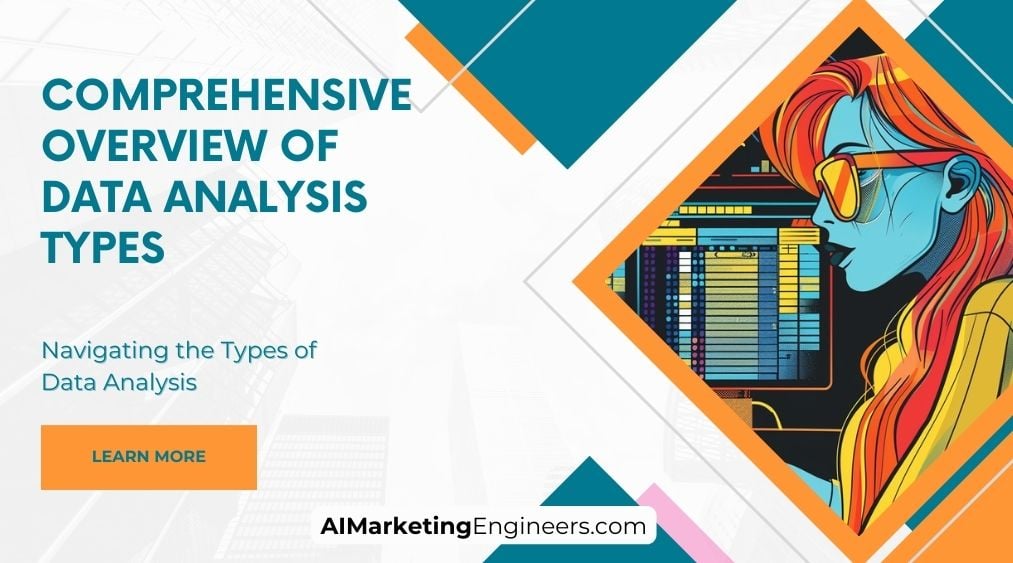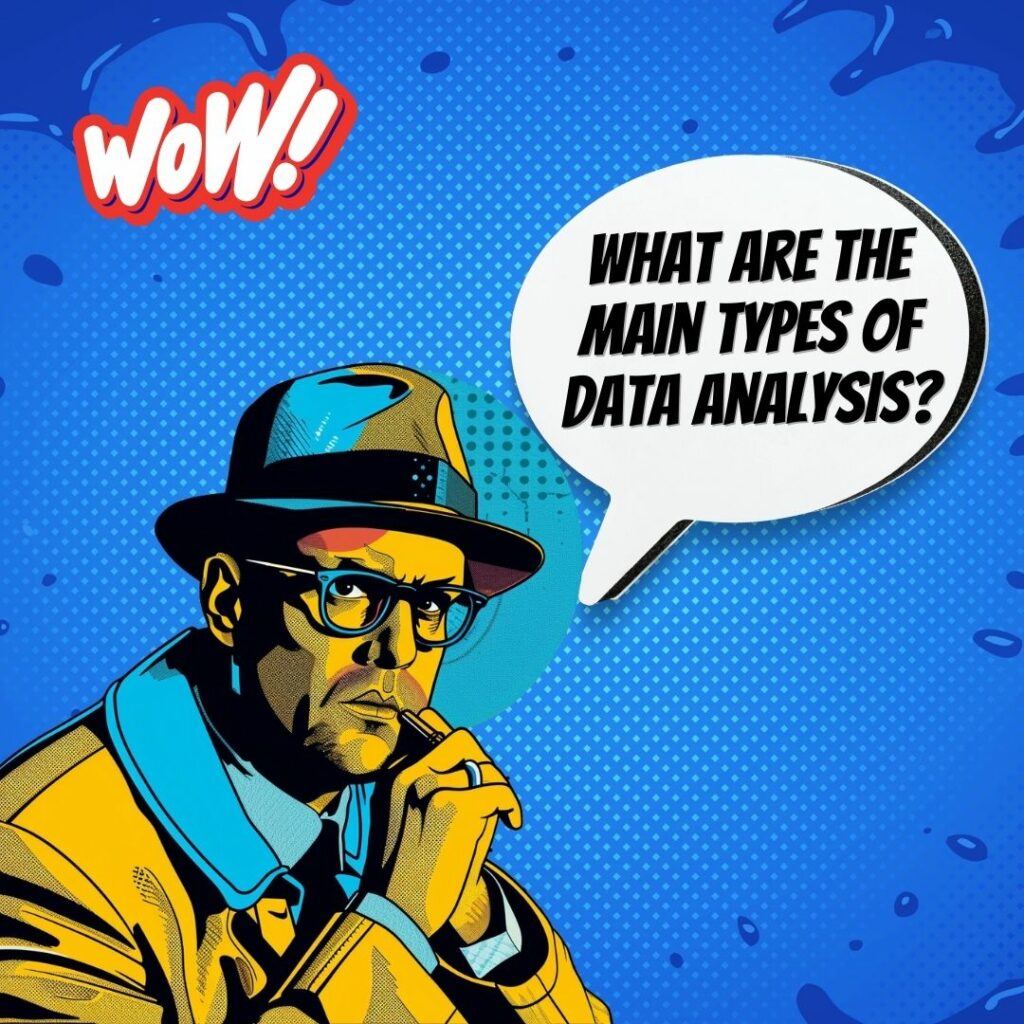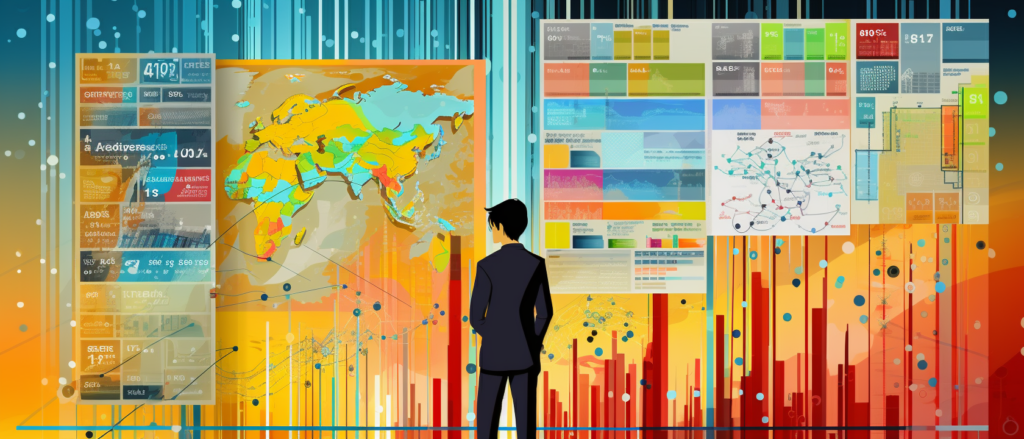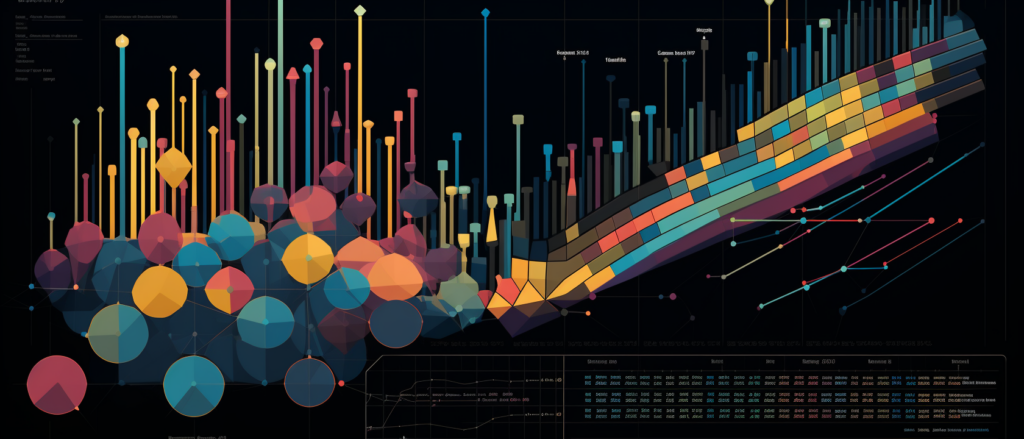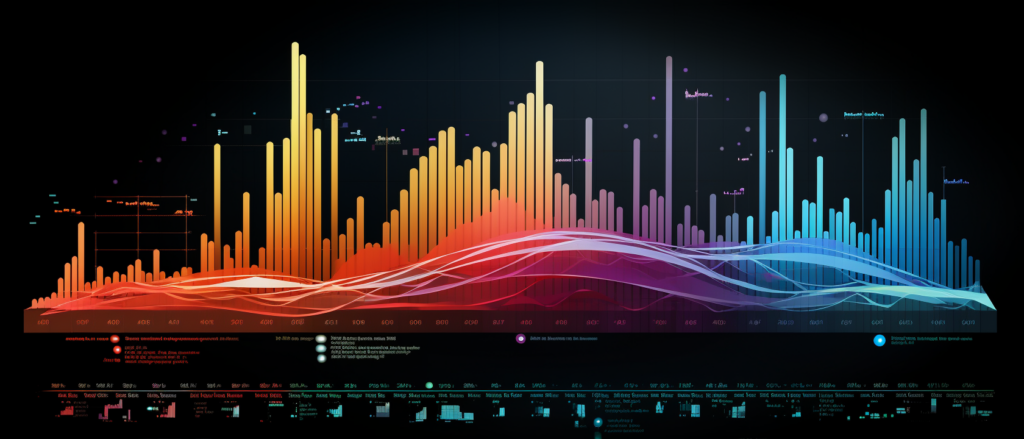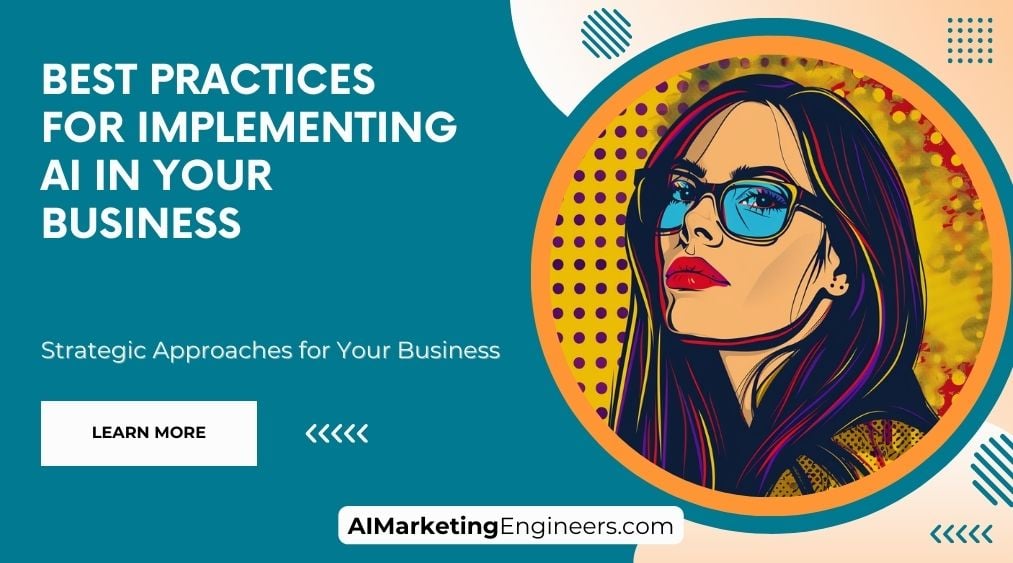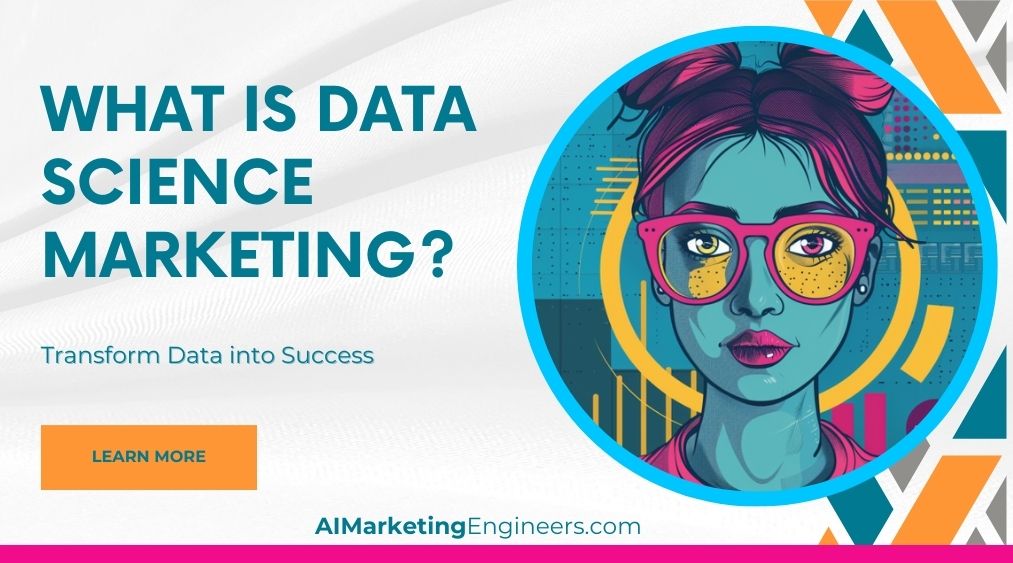Key Takeaways
✅ Data analysis types: Dive into the spectrum of data analysis techniques, from descriptive analytics spotlighting historical data trends to prescriptive analytics which forecasts and strategizes future business moves. Understand your past and shape your future with unparalleled precision.
✅ Understanding the approaches: Grasp the significance of each analytical approach to elevate your decision-making arsenal. From diagnosing patterns with diagnostic analytics to predicting the future with predictive analytics, each method holds the key to unlocking vast strategic territories.
✅ Tools and skills needed: Equip yourself with the arsenal of sophisticated tools and the skillset required to distill complex data into actionable insights. Familiarize yourself with powerhouse platforms and programming languages, and foster a blend of critical thinking and domain expertise.
Introduction
Why is it critical to master the varied landscape of data analysis types? Uncover the essentials of enhancing your decision-making proficiency through our Comprehensive Overview of Data Analysis Types: Techniques for Informed Decision-Making. Grasp the transformative power of data as we escort you through the intricate dance of numbers and narratives, deciphering each step from historical understanding to futuristic forecasting.
This compelling journey isn’t just about what data can tell us—it’s about shaping the very decisions that dictate tomorrow’s innovations. In this article, technological foresight meets analytical acumen to yield maximized revenue, an impressive ROAS, and an augmented ROI. We promise a trove of actionable insights and trend-setting revelations—essentials for the decision-maker eager to not just participate but also pioneer in an era of data revolution.
Top Statistics
| Statistic | Insight |
|---|---|
| Market Size and Growth: Expected to grow from $203 billion in 2020 to $684.1 billion in 2030, at a CAGR of 15%. (Source: Allied Market Research) | The incredible growth trajectory signifies the escalating importance of big data and analytics across all sectors. It’s a compelling call to action for businesses to harness big data for strategic insights. |
| Data Analytics Adoption Rates: 97.2% of companies surveyed are building data cultures; 92.2% have Chief Data Officers. (NewVantage Partners Big Data & AI Executive Survey, 2021) | The adoption rates reflect a culture shift towards data-driven decision making, presenting a standard that aspirational companies should be aiming for. |
| Industry Leaders in Data Analytics Usage: Financial Services, Healthcare, Retail, Manufacturing, and Professional Services lead adoption. (Source: Forbes Insights) | Understanding which industries are at the forefront can inspire and guide strategic investments in data analytics, providing a competitive edge. |
| Regional Focus: North America has the largest data analytics market share. (Source: Grand View Research) | This indicates a geographic advantage for North American businesses, which are likely to have better access to advanced analytics services and the talent to utilize them. |
| AI and Machine Learning Integration: Spending on AI systems is predicted to reach $110 billion in 2024. (IDC) | The integration of AI and machine learning with data analytics platforms is not just a trend, it’s a gateway to unprecedented efficiency and insights, pivotal for maintaining competitive relevance. |
Descriptive Analytics
Descriptive analytics is the cornerstone of understanding past performance, giving businesses a clear historical view by summarizing raw data in a way that is meaningful and informative. Techniques such as the mean, median, mode, frequency distribution, and percentiles allow companies to capture the narrative of their data, which serves as a solid foundation for more advanced analytics.
Diagnostic Analytics
Moving a step further, diagnostic analytics digs into data to answer the question, “Why did it happen?” It relies on methodologies such as correlation analysis, regression analysis, and root cause analysis to explore relationships and patterns that explain past behaviors or outcomes, turning data into actionable insights.
Predictive Analytics
Predictive analytics utilizes existing data to forecast potential future outcomes. By applying statistical techniques like time series analysis, and more complex machine learning algorithms such as decision trees and neural networks, businesses can identify trends, anticipate events, and make informed guesses about the future. Clustering another important method, helps in identifying groupings within data that can predict behaviors.
Prescriptive Analytics
Meanwhile, prescriptive analytics seeks to determine the optimal solutions to complex decisions. This forward-thinking data analysis type employs optimization models, simulation, and recommendation engines to advise on possible outcomes and guide decision-makers towards the best course of action based on the data.
Qualitative vs Quantitative Data Analysis
It’s essential to distinguish between qualitative and quantitative data analysis techniques. Qualitative analysis interprets non-numerical data for insights, while quantitative focuses on numerical data and applies statistical approaches. Each has its own strengths and weaknesses, and their use is determined by the nature of data and the specific context of the question at hand.
Choosing the Right Data Analysis Type
Deciding on the best data analysis technique aligns with your business objectives and the information at hand. Such a choice must consider the data availability, resources, and the complexity of the issue you’re analyzing. It’s not merely about data handling—it’s about aligning analysis with strategic goals to extract maximum value.
Inspirational Quotes
1. “Data is the new oil.” – Clive Humby
Clive Humby, acclaimed British mathematician and the brain behind the Tesco Clubcard loyalty program, coined a phrase that resonates powerfully in the corridors of the digital economy. Data, he posited, is the invaluable commodity fuelling the machinery of contemporary business. Just as the black gold of yesteryear powered engines and lit lanterns, data today ignites the spark of innovation and illuminates the path to strategic decision-making. A thorough grasp of data analysis types empowers organizations to distill wisdom from numbers, crafting strategies that operate with surgical precision and efficiency.
2. “Without big data analytics, companies are blind and deaf, wandering out onto the web like deer on a freeway.” – Geoffrey Moore
Picture a company poised on the edge of the information superhighway, akin to a woodland creature caught in the headlights, vulnerable amid the blistering pace of digital traffic. This vivid analogy by Geoffrey Moore, a sage in the realm of authorship and management consulting, highlights the indispensable nature of data analysis. Keen insights gleaned from a well-rounded understanding of data analysis types equip businesses with the sensory acuity to navigate the digital ecosystem. Executives and entrepreneurs alike must channel these insights to swerve deftly through competitive landscapes and adapt at the speed of e-commerce.
3. “The goal is to turn data into information, and information into insight.” – Carly Fiorina
Carly Fiorina, once at the helm of tech giant HP, succinctly delineates the transformative journey from data to wisdom. This expedition, propelled by a diverse array of data analysis techniques, is paramount for today’s decision-makers. From the conversion of raw data into informative metrics to the distillation of these metrics into actionable insights, such methodologies act as the lodestar for navigating complex business environments. Delving into this comprehensive overview lights a torch for stakeholders, revealing consumer patterns, operational opportunities, and nascent trends, thus equipping them with the tools to make enlightened decisions that resonate with success.
AI Marketing Engineers Recommendation
Recommendation 1: Leverage Predictive Analytics for Personalization: Use Comprehensive Overview of Data Analysis Types to understand and implement predictive analytics within your marketing strategy. This data-driven technique allows you to analyze historical and transactional data to identify customer behavior and forecast future trends. Stay ahead of the curve by personalizing your customers’ experience based on predicted needs and preferences, which can result in increased loyalty and conversion rates. For instance, if predictive analytics indicates a rising interest in eco-friendly products within your customer base, you can adjust your inventory and marketing efforts accordingly to capture this market segment.
Recommendation 2: Implement Augmented Analytics for Deeper Insights: Tap into the latest trend of augmented analytics to explore the vast capabilities of modern Comprehensive Overview of Data Analysis Types. By using machine learning and AI to automate data insights, augmented analytics enables you to process large datasets more efficiently, uncovering hidden patterns and opportunities that would otherwise require intensive manual analysis. Deploy this approach to enhance decision-making, optimize marketing campaigns in real-time, and deliver value at speed. For example, e-commerce businesses might enhance their recommendation engines, driving both engagement and sales through more accurate and sophisticated suggestions.
Recommendation 3: Integrate Visual Analytics for Improved Usability: Visual analytics is a practical application of Comprehensive Overview of Data Analysis Types, transforming complex data sets into intuitive visual representations that facilitate quick and informed decisions. Employ tools like Tableau, Looker, or Microsoft Power BI to turn your raw data into compelling visual stories that are easily understood by stakeholders at all levels. This approach not only streamlines the decision-making process but also democratizes data across your organization, fostering a data-driven culture and empowering team members to contribute to data-informed strategies. Visual analytics can be particularly powerful in identifying purchasing patterns and optimizing website design for enhanced user experience and increased sales.
Conclusion
In the dynamic terrain of data-driven decision-making, it’s paramount to arm oneself with a thorough understanding of various data analysis techniques. The voyage through descriptive, diagnostic, predictive, and prescriptive analytics has illustrated a strategic map for navigating the complexities of data—each technique offering unique insights to different facets of business performance. Harnessing the power of both quantitative and qualitative data analysis is akin to mastering different instruments to orchestrate a harmonious symphony of informed decisions.
Selecting the optimal analysis type is not just about leveraging data; it’s about aligning it with your overarching business objectives, sifting through the data noise to pinpoint actionable intelligence. Remember, descriptive analytics paints the past, diagnostic analytics deciphers the why, predictive analytics gaze into the future, and prescriptive analytics chart the course ahead.
As a linchpin of modern e-commerce strategies, weaving these techniques into your analytic repertoire will equip you to slice through competitive markets and tailor experiences that resonate with your consumer base. Stay agile, embrace innovation in data analytics, and let each piece of data be a stepping stone towards more knowledgeable, robust decisions. Herein lies the true essence of our journey—a salute to the transformative power of data when wielded with precision and foresight. Now, it’s your move. Turn these insights into action and watch as new opportunities unfold in the rich tapestry of your e-commerce narratives.
FAQs
Question 1: What is data analysis?
Answer: Data analysis is the process of examining, cleaning, transforming, modeling, and interpreting data to discover useful information, draw conclusions, and support decision-making.
Question 2: What are common data analysis techniques?
Answer: Some popular data analysis techniques include descriptive analytics, diagnostic analytics, predictive analytics, prescriptive analytics, clustering, regression, classification, time series analysis, and text mining.
Question 3: How do I choose the right data analysis technique for my problem?
Answer: Choose a data analysis technique based on your research question, available data, and the desired outcome. Descriptive analytics is for exploratory analysis, regression for forecasting, and clustering for segmentation.
Question 4: What skills are required for effective data analysis?
Answer: Essential skills include mathematical, statistical, programming, communication, critical thinking, and problem-solving capabilities. Knowledge of tools like Excel, SQL, Python, R, Tableau, and Power BI is also crucial.
Question 5: How can data analysis help in making informed decisions?
Answer: It reveals patterns, trends, relationships, and correlations in data, providing actionable insights for understanding business performance, customer behavior, and market trends better.
Question 6: Can you explain the difference between supervised and unsupervised learning?
Answer: Supervised learning uses labeled datasets for predictions or classifications, while unsupervised learning finds hidden structures in unlabeled data without predefined labels.
Question 7: How important is data visualization in data analysis?
Answer: It’s essential for communicating findings through charts, graphs, maps, and dashboards, enhancing comprehension, facilitating discovery, and aiding decision-making.
Question 8: What challenges might arise during data analysis?
Answer: Challenges include dirty or missing data, privacy concerns, lack of domain knowledge, technical limitations, poorly defined objectives, and stakeholder resistance.
Question 9: How does big data impact data analysis?
Answer: Big data brings opportunities and challenges due to its volume, velocity, variety, veracity, and value, requiring scalable infrastructure and specialized skills.
Question 10: What resources would you recommend for learning more about data analysis?
Answer: Online courses, books, blogs, podcasts, conferences, meetups, and projects on platforms like Coursera, Udemy, edX, Kaggle, Medium, Towards Data Science, O’Reilly, PyData, Strata, and GitHub.
Academic References
- Bengfort, B., Holt, B., & Haisler, D. (2018). Data Science and Analytics with Python. This book serves as a practical introduction to the data analysis techniques in the Python ecosystem, discussing data wrangling, statistical analysis, machine learning, and visual representation of data. It is particularly valuable for its real-world application examples.
- James, G., Witten, D., Hastie, T., & Tibshirani, R. (2013). An Introduction to Statistical Learning. Offering a deep dive into statistical learning methods, this academic tome covers a slew of essential algorithms, from linear regression to machine learning techniques, equipping readers with the insights required to apply these methods in various fields.
- Peng, R. D., Matsui, E., & Leek, J. (2017). The Art of Data Science: A Guide for Anyone Who Works With Data. This resource is crucial for mastering the art of data science beyond mere number-crunching, emphasizing interpretation, critical thinking, and clear communication—skills necessary for translating data analysis into actionable insights.
- Han, J., Kamber, M., & Pei, J. (2011). Data Mining: Concepts and Techniques. It’s an in-depth treatise on data mining methodologies, exploring theoretical underpinnings as well as practical applications. By encapsulating a wide range of subjects, including anomaly detection and stream mining, it becomes indispensable for informed decision-making.
- Marz, N., & Warren, J. (2015). Big Data: Principles and Best Practices of Scalable Realtime Data Systems. This work underscores the structural elements of big data systems, tackling the challenge of designing infrastructures that are both scalable and reliable, thereby crucial for decision-making in data-intensive scenarios.
